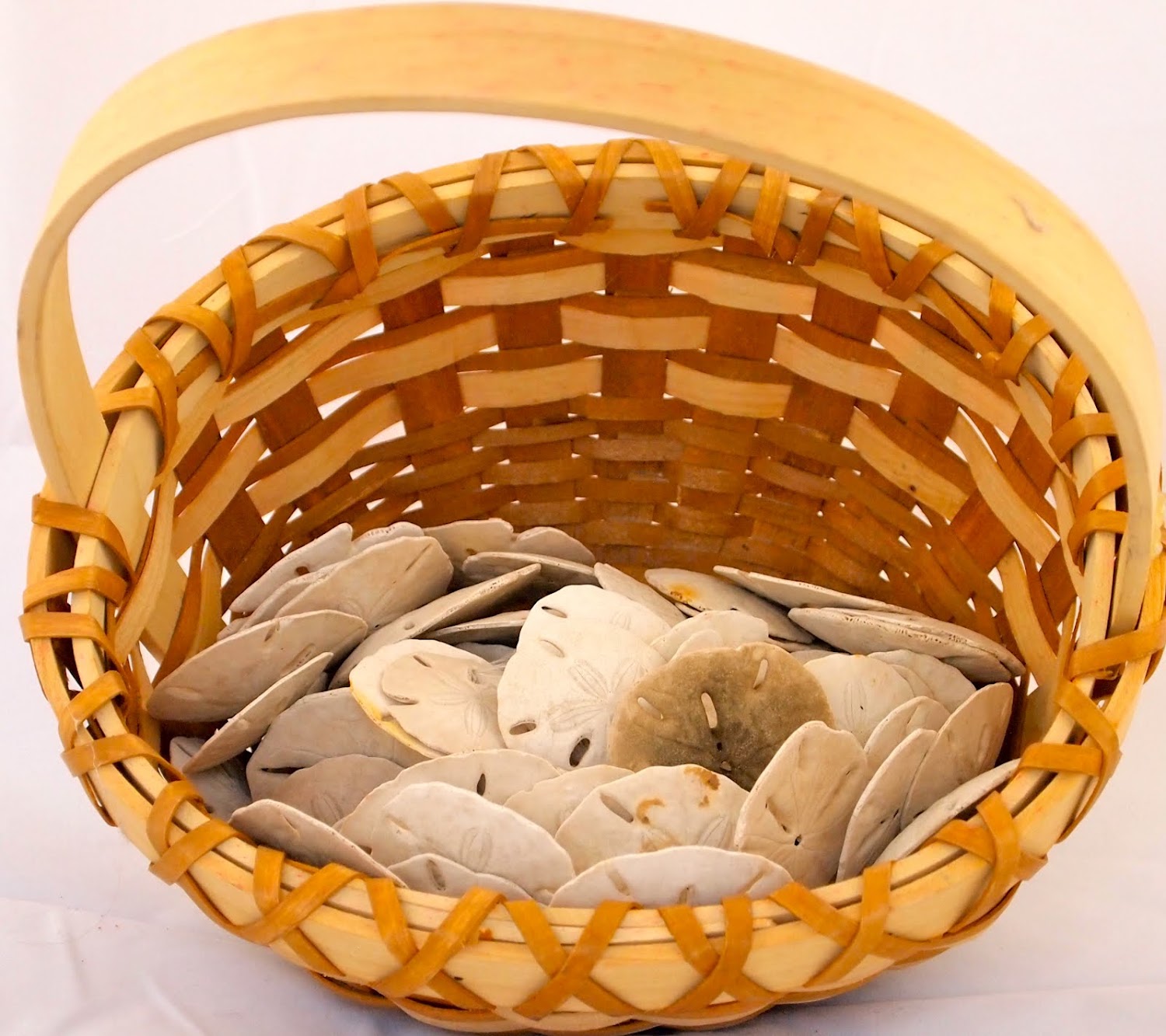Monday, April 23, 2012
Sand dollar general
I see a lot of shells at estate sales, and very often they're in the bathroom. Once upon a time, it was de rigueur to accessorize one's powder room with sea shells, usually by placing a bowl or basket of them on the counter, right next to the sink. I don't get that at all—I've got a pretty expansive bathroom countertop; nevertheless it's so crowded with mostly ineffective products and machinery that I wouldn't dream of trying to shoehorn some shells (or any tchotchkes) into the mix, unless my dermatologist told me that rubbing one's face with conchs is as good as Botox, but without all that Botox baggage.
A lot of those bathroom shells seem to be the kind you buy prepackaged at a craft store or maybe a seaside tourist shop, not the kind that you dedicate a lifetime of vacations to collecting. Those kind of shells usually occupy a place of honor in the home—on the mantel, or in a basket on the coffee table. This particular basket of sand dollars, which my kids forced me to buy, is the latter type. I didn't want to buy them; for one thing, baskets bum me out. Judging by estate sale evidence, suburbanites have waaay too many of them. They're pernicious. They fill closets and garages. Cheap, sad baskets, the kind you buy at Michael's or Hobby Lobby, not the kind that could be exhibited at museums of Native American art (those kind of baskets, I do like). My crankiness about baskets is feeling a little fresh as I've just packed up Easter and shoved it into a closet that once seemed spacious. We've somehow managed to accumulate more Easter baskets this year. I have two kids with at least a dozen baskets between them. This is how it begins.
My other issue with buying this basket of sand dollars is that there's something not right about buying an instant collection, when you consider the years of effort, of sharp-eyed beachcombing, it took to gather these perfect sand dollars. The quest, and the memories of the quest, is what shelling—and any kind of collecting—is about. I grew up vacationing on the Jersey shore, which is great for shelling but, as with any beach, there's a limited variety of shells you can find—it was mostly scallops, clams, oysters, mussels, jingle shells, and on a good day, moon snails and whelks. When I was a little kid, I was always searching for a conch or coral or a sand dollar, treasures that never washed up on our stretch of the Jersey shore (though we did find horseshoe crabs, dead sharks, and one terrible summer, medical waste and alleged animal sacrifices from Santeria rituals). I didn't find an actual sand dollar on a beach until I was in my early 30s and visiting friends in lovely Lynn, Massachusetts. I still have those sand dollars, in a cut-glass candy dish that belonged to Lindsay's grandmother, on a shelf in my office, alongside the exotic shells I found in Kaui on my honeymoon, volcanic rocks from Iceland and the Clovis artifacts discovered in my own backyard. Are they destined to be sold at my estate sale (many many many decades from now)?
Despite all my misgivings, I didn't think twice about shelling out a couple of bucks for somebody else's shell collection. 'Twas a small price to pay to extend my stay at a really good estate sale. Plus, the kids have come up with all sorts of games involving the sand dollars. They even dyed a few of them along with their Easter eggs—and they're now stowed in the once-spacious closet, along with their inflatable rabbits, singing rabbits, vintage rabbits and one dozen Easter baskets.
Subscribe to:
Post Comments (Atom)



No comments:
Post a Comment